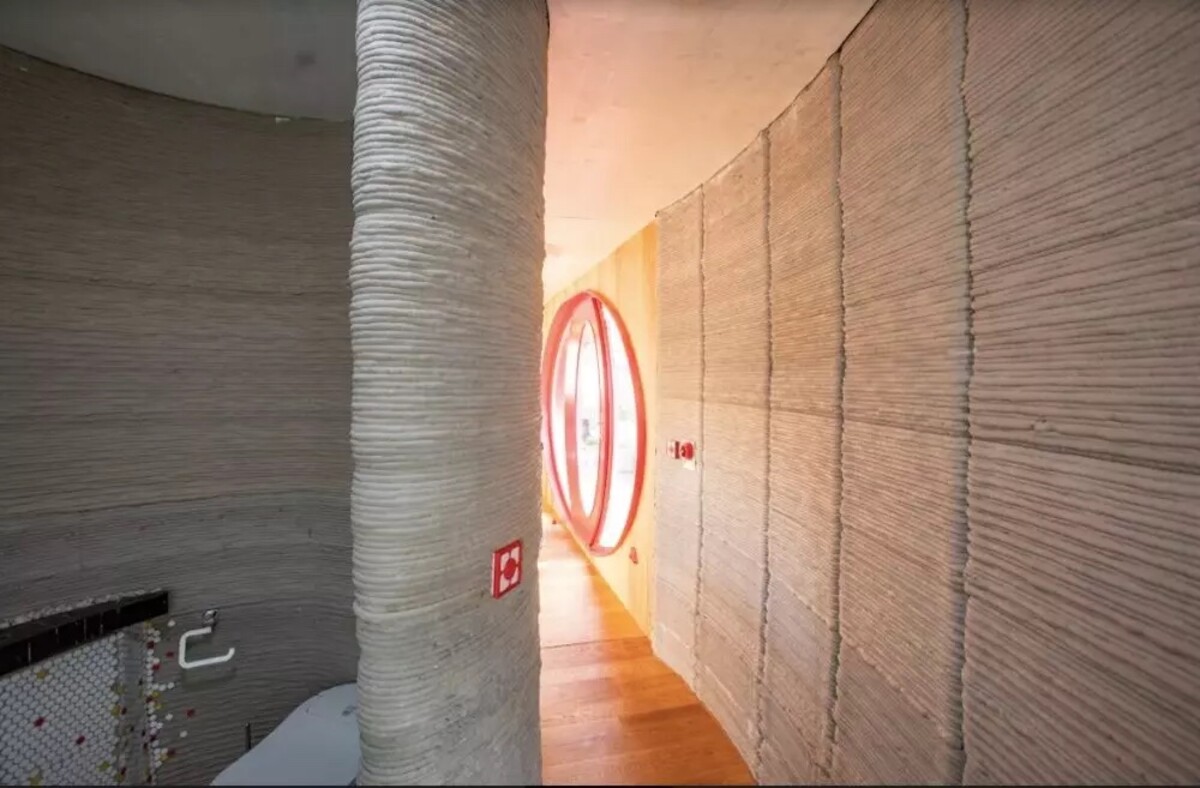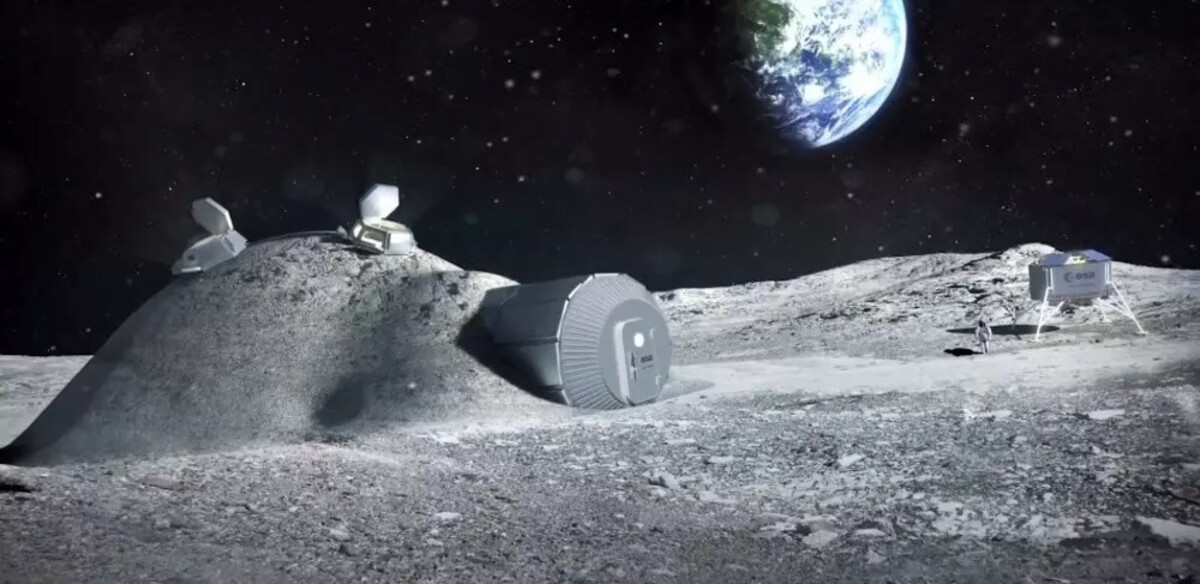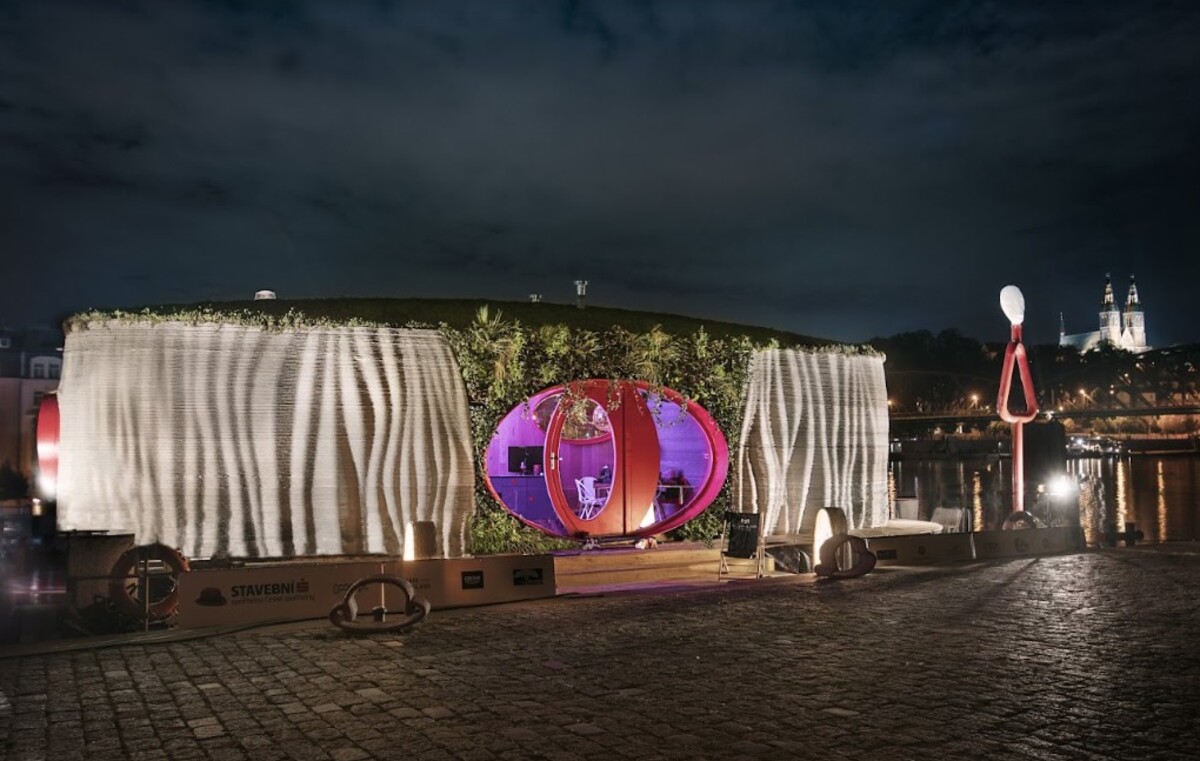Concrete 3D printing is fast, and makes buildings look futuristic.The future is expecting buildings on the moon.
Printing an object in a 3D printer is nothing new today. The technology can produce products including furniture, food and even bones. It is starting to become a common part of consumer goods production technology, is used in engineering and is slowly but surely making its way into construction and architecture as well. Today you can walk on a "printed" bridge in Amsterdam or enter a "printed" house in Prague.
3D printing is the process of creating physical objects by layering concrete-like materials based on the demands of a digital robot. As parametric-architecture.com writes, compared to other conventional manufacturing processes, and its biggest advantage is, that it can create products very quickly and accurately.
The construction industry has begun to use 3D concrete printing technology to build homes and construction projects such as wells, wind turbines, fireplaces, walls, staircases, and many other architectural features. This technique brings with it many advantages such as on-site assembly, reduced time, lower costs and higher quality.
It originated in Japan
3D printing was first discussed in Japan in the 1980s. Hideo Kodama, a car designer, was already trying to design a rapid prototyping method. He invented a method of production, where layer after layer is placed on top of each other, he used a photosensitive resin polymerized by UV radiation. Later, in 1988, Charles Hull, CTO of 3D Systems, developed the first SLA 3D printer. He invented the technology of producing 3D models by curing photosensitive resins with radiation, particles or lasers.
The industrial platform is gaining popularity and efficiency day by day and is constantly evolving. New industrial research and development is also on the rise, indicating that 3D printing has a promising future.

Houses on the moon may become a reality
When discussing the development of life on other planets, there is much doubt about how we imagine a built space suitable for human life in a foreign space with unknown conditions and materials. 3D printing could revolutionize space by helping astronauts create objects in space on demand. Spare parts for repairs, custom equipment for science experiments, and even objects like buildings, he writes re-thinkingthefuture.com
In general, society is rather conservative, so people gradually find their way to everything new. At first, it will appeal to people who want something original, or technology enthusiasts, and only over time will it begin to spread to the wider public.
Sending large amounts of building materials to the moon would be expensive and time-consuming. Texas-based startup ICON claims it has a solution – 3D printing a lunar base from moon dust. ICON is working with NASA to develop technology that can turn lunar dust into a concrete-like material. Moon dust, also known as lunar regolith, is the extraterrestrial surface covering the Moon made up of minerals and tiny fragments of glass formed over millions of years when meteoroids hit the Moon.

The largest 3D printed building can be found in Dubai
Technology transforms the view of traditional architecture, the buildings appear futuristic. You can find elements and objects of 3D printed architecture in Dubai, for example. Local companies use it, for example, for the construction of office buildings, it even appears as a special feature of showrooms and shops. The city is also home to the largest 3D printed building in the world.
A little closer to us is the first 3D printed steel bridge over the canal, you can find it in Amsterdam. In addition to the eye-catching design, it also contains hidden sensors that, for example, collect data on how many people cross the bridge per day. The original plan was to create a bridge directly on the site, but this proved impossible for safety reasons, so it was made in a factory.
The first house using 3D printing was built in Slovakia in 12 hours, a house on the water was created in Prague
3D printing is slowly but surely making its way in the field of architecture in Slovakia and the Czech Republic. Proof of this is the first Slovak 3D printed house built in less than 12 hours. In Prague, they built a unique house on the water.
According to the sculptor Michal Trpák, 3D printing with concrete is a global emerging trend, which aims to transform a digital 3D model of a house into reality using a robot and thus replace the manual work of bricklayers. "However, the technology is still at the beginning, so for now it will be more about a combination of 3D printing with classic procedures," says the author of the unique floating house called Prvok.

He further claims that society is generally rather conservative, and as with anything new, people gradually find their way. 3D printing in architecture will probably first appeal to people who want to have something original, or technology enthusiasts, and over time it will begin to spread to the wider public.
"3D concrete printing is an emerging global trend, and new companies dealing with this technology are emerging every year in the Czech Republic and Slovakia. So we are definitely not behind. Scooplt is a company that is among the world leaders with its projects, at least when it comes to unique implementations," adds Michal Trpák.
It can and can bring a completely new visual appearance to buildings and change the face of cities as we know them today. According to Trpák, a big advantage is that the robot printing a 3D object follows the data and doesn't care if it goes straight along the wall or in any curved way. This freedom of form can facilitate the construction of a new type of building.





